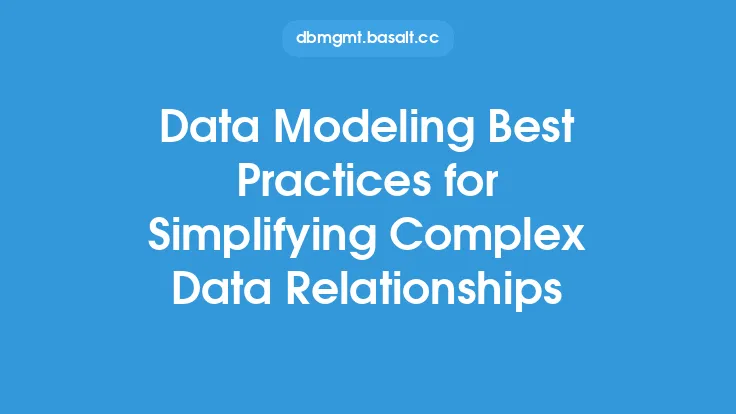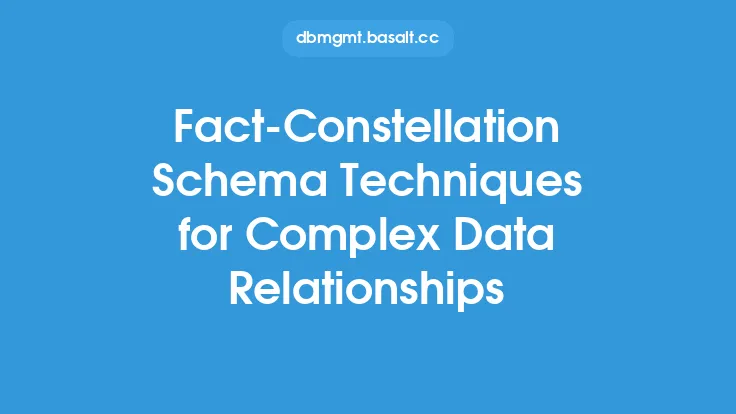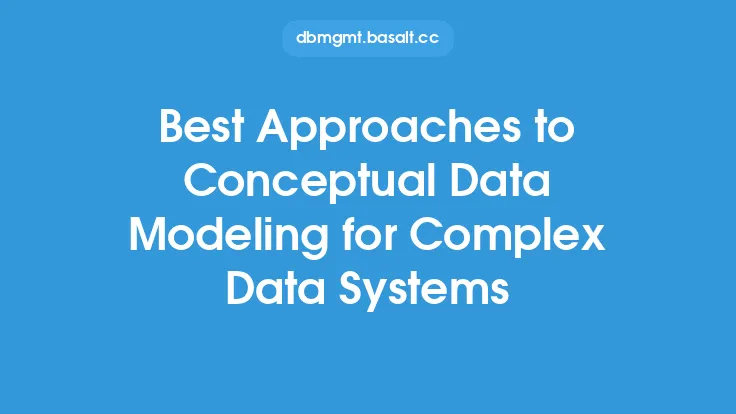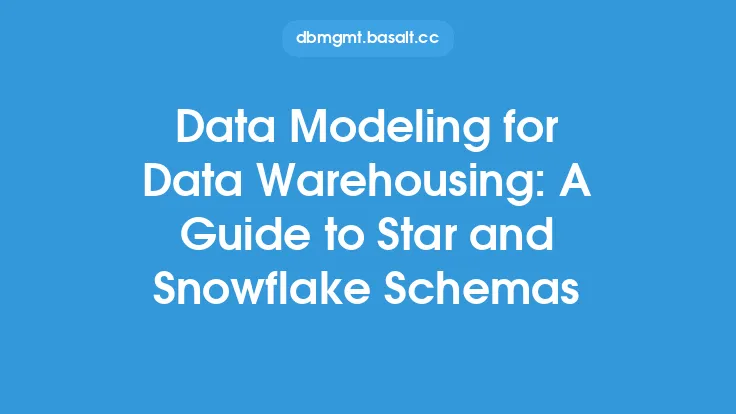In the realm of data modeling, effectively capturing and representing complex relationships between entities is crucial for the integrity, scalability, and usability of a database. Complex relationships often involve multiple levels of abstraction, where entities are related to each other in a hierarchical manner. This is where hierarchical data modeling comes into play, offering a structured approach to organizing and managing data that reflects these intricate relationships. Hierarchical data modeling is particularly useful in scenarios where data entities have a natural hierarchical or tree-like structure, such as organizational charts, product categorizations, or geographic locations.
Introduction to Hierarchical Data Modeling
Hierarchical data modeling is based on the concept of a hierarchy, where each level represents a specific category or entity, and each category can have multiple subcategories or children. This model is ideal for representing one-to-many relationships, where one parent entity can have multiple child entities. The hierarchical structure allows for efficient querying and navigation through the data, making it easier to analyze and understand the relationships between different entities. For instance, in an e-commerce database, products can be categorized into departments, which are further divided into subcategories, illustrating a hierarchical relationship.
Key Components of Hierarchical Data Modeling
The key components of hierarchical data modeling include the root, which is the topmost level of the hierarchy; the parent, which is an entity that has child entities; the child, which is an entity that belongs to a parent; and the leaf, which is an entity that does not have any child entities. Understanding these components is essential for designing an effective hierarchical data model. Additionally, the relationships between entities can be defined using various types of links, such as IS-A (generalization), PART-OF (aggregation), and HAS-A (composition), which help in establishing the hierarchical structure.
Designing a Hierarchical Data Model
Designing a hierarchical data model involves several steps, including identifying the entities and their relationships, determining the hierarchy, and defining the attributes for each entity. It is crucial to start with a clear understanding of the business requirements and the data that needs to be modeled. The entities should be identified based on their roles and responsibilities within the hierarchy, and the relationships between them should be defined to reflect the real-world scenario. For example, in a university database, the hierarchy might include faculties, departments, and courses, where each faculty has multiple departments, and each department offers multiple courses.
Implementing Hierarchical Data Modeling
Implementing hierarchical data modeling can be achieved through various database management systems, including relational databases, NoSQL databases, and graph databases. Relational databases use tables to represent entities and relationships, while NoSQL databases offer more flexible data models, such as document-oriented or key-value stores. Graph databases, on the other hand, are specifically designed to store and query complex relationships and are ideal for hierarchical data models. The choice of database management system depends on the specific requirements of the application and the complexity of the data.
Benefits of Hierarchical Data Modeling
Hierarchical data modeling offers several benefits, including improved data organization, enhanced data integrity, and efficient querying. By organizing data in a hierarchical structure, it becomes easier to navigate and analyze the relationships between different entities. Additionally, hierarchical data modeling helps to reduce data redundancy and improve data consistency, as each entity is defined only once and can be referenced multiple times. This, in turn, improves the overall performance of the database and supports more accurate and reliable data analysis.
Challenges and Limitations of Hierarchical Data Modeling
While hierarchical data modeling offers several benefits, it also presents some challenges and limitations. One of the main challenges is the complexity of designing and implementing a hierarchical data model, which requires a deep understanding of the data and its relationships. Additionally, hierarchical data models can become rigid and inflexible, making it difficult to adapt to changing business requirements. Furthermore, querying hierarchical data can be complex and may require specialized query languages or techniques, such as recursive common table expressions (CTEs) or graph traversal algorithms.
Best Practices for Hierarchical Data Modeling
To overcome the challenges and limitations of hierarchical data modeling, several best practices can be followed. First, it is essential to keep the hierarchy as simple and flat as possible, avoiding deep nesting and complex relationships. Second, the data model should be designed to be flexible and adaptable to changing business requirements. Third, the use of standardized data formats and query languages can help to improve data interoperability and reduce the complexity of querying hierarchical data. Finally, regular data validation and normalization can help to ensure data integrity and consistency, which is critical for reliable data analysis and decision-making.
Conclusion
Hierarchical data modeling is a powerful technique for representing complex relationships between entities in a database. By understanding the key components, design principles, and implementation strategies, data modelers can create effective hierarchical data models that support efficient querying, improved data integrity, and enhanced data analysis. While hierarchical data modeling presents some challenges and limitations, following best practices and using the right database management system can help to overcome these issues. As data continues to grow in complexity and volume, the importance of hierarchical data modeling will only continue to increase, making it a fundamental skill for data professionals and a crucial aspect of data modeling.





